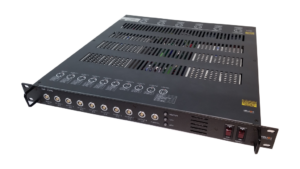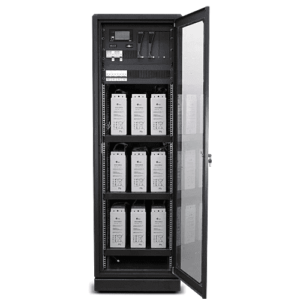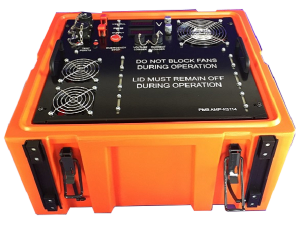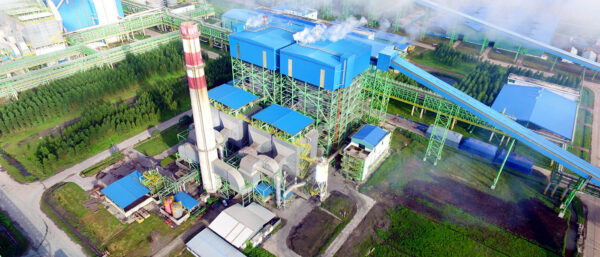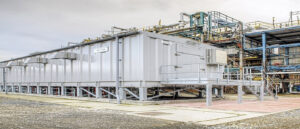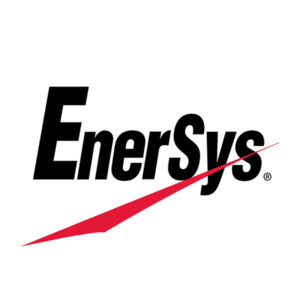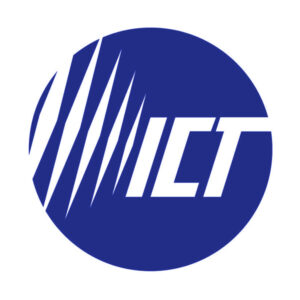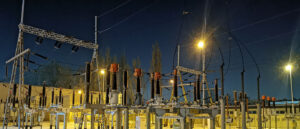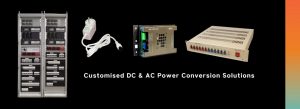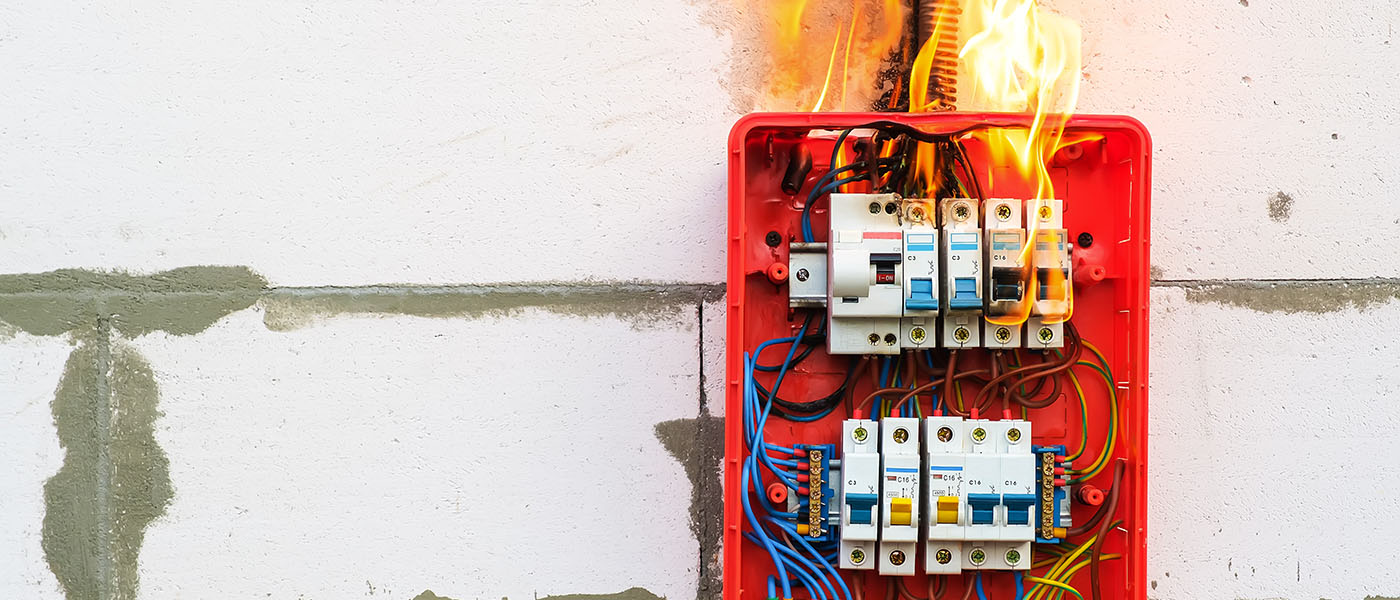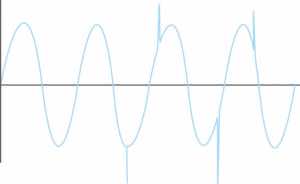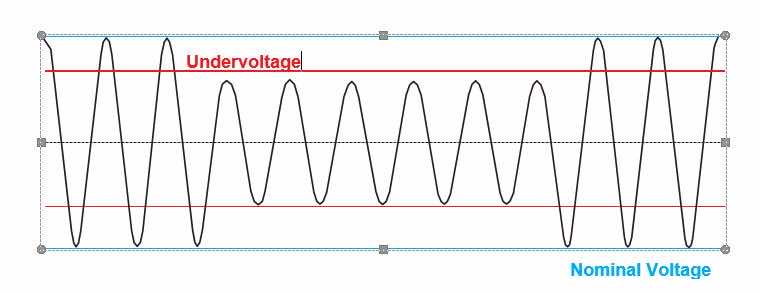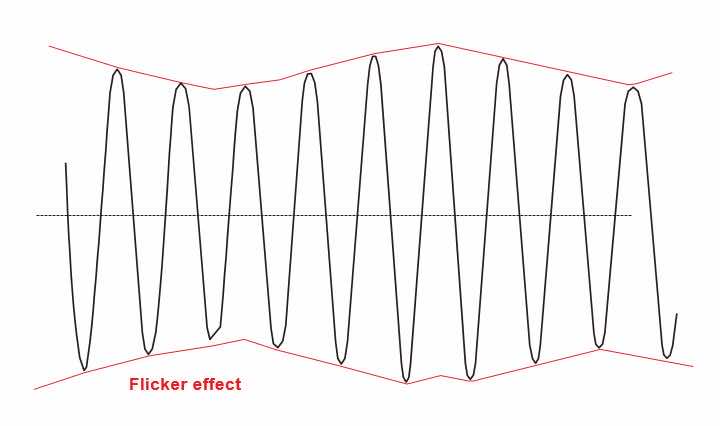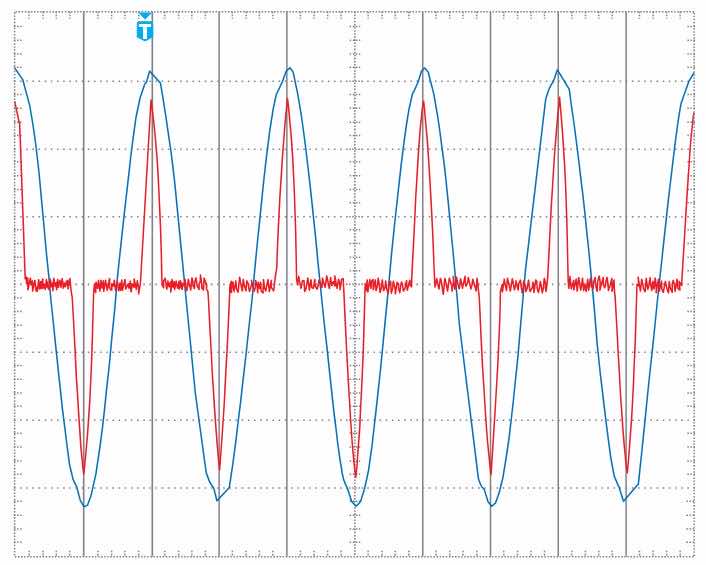Power quality (PQ) related issues are of most concern nowadays. The widespread use of electronic equipment, such as information technology equipment, power electronics such as adjustable speed drives (VSD), programmable logic controllers (PLC), energy-efficient lighting, led to a complete change of electric loads nature. These loads are simultaneously the major causes and the major victims of power quality problems. Due to their non-linearity, all these loads cause disturbances in the voltage waveform.¹
Electrical equipment is occasionally exposed to transient overvoltages (surges/spikes), swells, flickers, unregulated voltages, voltage dips/sags, interruptions or waveform disturbances (power factor, harmonics, others).
Main Disturbances
1. Overvoltage
An overvoltage is an increase in voltage for a time of over 10 ms. Overvoltages can be induced by the disconnection of heavy loads (interruption 2. of production processes in industries: the reduction in the speed of electric motors, arc furnaces, rolling mills etc.) or by natural events such as lightning. Spikes and transients differ to power surges because they are larger in magnitude yet much shorter in duration. These sudden bursts of energy can result in circuit board or processor damage, memory loss and data corruption.
Causes of overvoltage: Lightning, switching of lines or power factor correction capacitors, disconnection of heavy loads.
Consequences of overvoltage: Destruction of components (particularly electronic components) and of insulation materials, data processing errors or data loss, electromagnetic interference.
2. Voltage Swells / Voltage Surges
Momentary increase of the voltage, at the power frequency, outside the normal tolerances, with duration of more than one cycle and typically less than a few seconds. Check out our complete range of surge protection devices to protect your application from the mains supply service entrance until end-load point of connection. SPDs are designed against surges and transients.
Causes of swells: Start/stop of heavy loads, badly dimensioned power sources, badly regulated transformers (mainly during off-peak hours).
Consequences of swells: Data loss, flickering of lighting and screens, stoppage or damage of sensitive equipment, if the voltage values are too high.
3. Voltage Spikes & Transients
Spikes and transients are fast-moving, high-energy bursts lasting for just a few milliseconds that are superimposed onto the normal mains power supply.
They range from a few volts to several thousand volts (some can 6 kV or higher) and are caused by the sudden release of stored energy. Spikes and transients are common during electrical storms and following lightning strikes.
Spikes and transients differ to power surges because they are larger in magnitude yet much shorter in duration. These sudden bursts of energy can result in circuit board or processor damage, memory loss and data corruption. Check out our complete range of surge protection devices to protect your application from the mains supply service entrance until end-load point of connection. SPDs are designed against surges and transients.
4. Voltage Sags
A voltage sag is a short duration (i.e , 0.5 – 60 cycles) decrease in the RMS voltage magnitude, usually caused by a fault somewhere on the power system. Voltage sags are the most important power quality problem facing many industrial customers especially those with a process. A sag is when the voltage drops below 90% of nominal.
Causes:
- Faults on the transmission or distribution network (most of the times on parallel feeders).
- Faults in consumer’s installation.
- Connection of heavy loads and start-up of large motors
- Switching OFF large reactive power source
- Operations of surge suppressors in the power system
Consequences: Malfunction of equipment used in modern industrial plants ( process controllers , PLC , Variable Speed Drives) is actually becoming more sensitive to voltage sags as the complexity of the equipment increases.
5. Short And Long Interruptions:
Interruptions occur when a source-side protective device opens a section of the circuit due to a fault condition. The interruption may be sustained or momentary. Sustained interruptions last minutes or hours while momentaries last few seconds.
Causes of short interruptions: Mainly due to the opening and automatic reclosure of protection devices to decommission a faulty section of the network. The main fault causes are insulation failure, lightning and insulator flashover.
Consequences: Tripping of protection devices, loss of information and malfunction of data processing equipment.Stoppage of sensitive equipment, such as ASDs, PCs, PLCs, if they’re not prepared to deal with this situation.
Causes of long interruptions: Eqquipment failure in the power system network, storms, animals and objects ( trees, cars) striking lines or poles, fire, human error, bad coordination or failure of protection devices.
Consequences: Systems shut down.
6. Flicker Effect
The flicker effect is a flickering of lights induced by rapid variations in voltage.These voltage variations are caused by loads in which the power absorption varies very quickly: arc furnaces, welding machines, rolling machines, laser cutters.
Consequences: Flicker impacts workplace safety and productivity, the comfort of living spaces, and, according to recent research, our overall health and emotional wellbeing. From a safety perspective, for example, fast-rotating elements present in an operator’s field of vision appear to be moving less quickly or stopped with excessive flicker. From a photobiological perspective, prolonged exposure to excessive flicker causes neurological problems such as headaches, migraine, and even epilepsy.From a technology perspective, flicker strongly impacts lighting for digital image capture, particularly in TV studios and stadiums. Strict broadcast requirements demand use of proper power systems to avoid camera image artifacts, particularly stroboscopic effects during high-speed capture for slow-motion replay. ²
7. Harmonic Distortion
Origen Of Harmonics:
Devices that generate harmonics are present in the industrial sector, the service sector and also in the home. Harmonics are generated by non-linear loads: a load is defined as non-linear when the current which it absorbs does not have the same form as the voltage that supplies it. Power electronics such as rectifiers, inverters, electronic starters, variable frequency motor drives, switching power supplies, discharge lamps are classic examples of non-linear loads. The powering of non-linear loads causes the appearance of THDIs (Total Harmonic Distortion Currents) circulating in the system. In turn, harmonic currents that pass through the power supply circuit (lines and transformers), cause the deformation of the mains voltage: the harmonic distortion in voltage THDU (Total Harmonic Distortion Voltage).
Consequences:
- The electronic power regulation systems may be disturbed by the fact of having to work with voltages that are not perfectly sinusoidal.
- The electronic signal systems, designed to work with very low currents, can easily be “fooled”by the presence of disturbances induced by high-frequency electromagnetic fields.
- Increased probability in occurrence of resonance.
- Neutral Overload in 3-phase systems.
- Overheating of all cables and equipment and loss of efficiency in electric machines.
8. Low Power Factor
It’s Not A Power Quality Problem But It Affects The Efficiency Of Your Electrical System And Power Bill
A poor power factor (0.95 PF or less) is caused when a circuit has a high level of inductive loads (electric motors, lighting ballasts, transformers) causing the circuit voltage and current waveforms to be out of phase and the resultant using more apparent power than is needed.
Should I Be Concerned About Low Power Factor?
Low power factor means you are not fully utilizing the electrical power you are paying for.
How Can I Improve The Power Factor?
The power factor of factory/installation can be improved by adding power factor correction capacitors. Capacitors act as reactive current generators, so the amount of current your distribution system must draw is reduced and therefore your POWER BILL.
Where Should I Install Capacitors?
At the load:
As we mentioned before capacitors act as KVAR generators, so the most effective place to install them is directly at the motor, where the reactive power is consumed.
At the incomer:
When correcting complete plant loads, capacitor banks can be fitted at the service entrance, if load conditions and transformer size allow. If the amount of correction is considerable, some capacitors can be installed at individual motors or branch circuits. When capacitors are connected to the bus, feeder, motor control centre, or switchboard, a disconnect and overcurrent protection must be installed.
Benefits Of Using Power Factor Correction:
- Improved efficiency and reduction in power demand therefore saving on electricity costs.
- Reduced CO2 emissions.
- Increased system capacity
Typical Load Power Factor Industries:
- Hospitals & Granaries
- Saw Mills
- Plastic ( especially extruders)
- Breweries
- Chemicals
¹ Power Quality Issues, Solutions and Standards: A Technology ReviewP. M. Balasubramaniam and S. U. Prabha ² Ranger Power Quality

